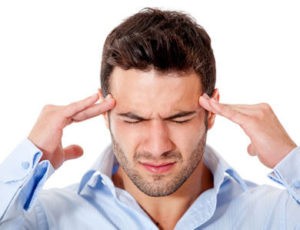Headaches – Simple or Serious?

There are many different types of headaches. They have their own names, their own symptoms, and their own best treatments. The sooner you can identify your type of headache, the better you will be able to manage it.
Most people get tension headaches. Symptoms include soreness in the temples, a tightening vice-like ache around the forehead, and pain in the head and/or neck muscles. The pain is steady, continuous and very annoying. Most people get relief in an hour or two with an overthe counter pain reliever. Somefind the best relief comes from combining their analgesic medication with a long walk, a short nap or a good night’s sleep. If you get these headaches almost daily, then you may suffer from chronic tension headaches, which can be more serious and should not be ignored.
Sinus headaches are also common. These headaches are caused by sinus congestion and inflammation called sinusitis. They occur when your sinuses (the air-filled cavities around your nose, eyes, and cheeks) become inflamed because of an allergic reaction or an infection. Bending down or leaning over generally makes the pain worse, as does cold and damp weather. Sinus headaches begin when you get up in the morning, usually because at night while you are lying down the mucus collects and drains. You may feel better by the afternoon.
Sinus risk factors include a history of allergies, asthma, nasal polyps (noncancerous overgrowths in the nasal passages) or if you recently have been flying or hiking in high altitudes. Frequent swimming or diving can also produce symptoms. Generally, antihistamines or decongestants are recommended along with antibiotics if you have an infection.
A migraine headache often starts with a dull ache, which progresses to a continuous pulsating, throbbing pain, usually at the temple and the front or back of one side of your head. For some people a warning aura is a signal of impending pain. Most commonly, there is a visual indicator such as a flashing light or black zigzag lines. Migraine sufferers are sensitive to light, noise, and even smells, and may becomenauseous.
Migraine headaches frequently begin in childhood and worsen through adolescence. Although more young boys than girls have migraines, conversely more adult women than adult men have migraines. Over time, for both sexes the frequency of migraine onset diminishes and they become infrequent after age 50. Migraines have a tendency to run in families. In fact, four out of five migraine sufferers have a family history. If one parent has had migraines, you have a 50% chance of developing migraines, and if both parents have a history of migraines, the risk jumps to 75%.
Rebound headaches can result when people take too much headache medication—more than prescribed recommendations or the label’s instruction—causing a recurrence. This is especially true if your medication contains caffeine, which speeds the effectiveness of the other ingredients but can also make your headache more likely to recur.
Sometimes it is difficult to tell the difference between a tension headache, a sinus headache or a migraine without an office visit. A wide range of treatments have been proven to prevent or treat headaches. They range from prescription medications to over-the-counter analgesics… and in some cases may also include acupuncture, meditation, and a variety of selfhelp and life style therapies.
Occasional headaches are common. But it is important to take headaches seriously.
Please call our office if:
- You regularly have two or more headaches a week
- You take a pain reliever for your headaches every day or almost every day
- You need more than the recommended dose of over-the-counter-pain remedies to relieve symptoms
- Your headache pattern changes
- Your headaches are getting worse
Seek medical help immediately if your headache:
- Is sudden and severe
- Accompanies a fever, stiff neck, confusion, seizure, double vision, weakness, numbness or difficulty speaking
- Follows a head injury
- Gets worse despite rest and pain medication

